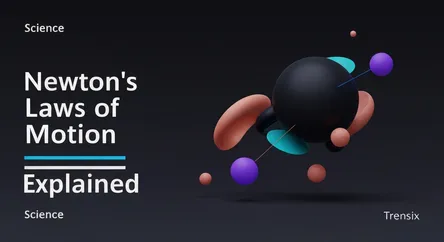Science
Newton's Laws of Motion Explained

A simple breakdown of Newton's three laws of motion and how these fundamental principles of physics govern everything from cars to space travel.
What is it?
First published by Isaac Newton in 1687, the three laws of motion are foundational principles of classical mechanics that describe the relationship between an object and the forces acting upon it.
- First Law (Law of Inertia): An object will remain at rest or in uniform motion in a straight line unless acted upon by an external force. This means objects resist changes to their state of motion.
- Second Law (Law of Acceleration): The force acting on an object is equal to the mass of that object multiplied by its acceleration (F=ma). In simple terms, it takes more force to move a heavier object.
- Third Law (Action and Reaction): For every action, there is an equal and opposite reaction. This means forces always occur in pairs; if you push on an object, it pushes back on you with equal force.
Why is it trending?
While centuries old, these laws are perpetually relevant as they form the bedrock of modern physics and engineering. They are essential for understanding everything from planetary orbits to the mechanics of a simple ball game. In technology, they are fundamental to innovations like aerospace engineering, vehicle design, and robotics. Physics engines in video games and virtual reality systems also rely on these laws to create realistic motion and interactions. Their timeless applicability in education and technological advancement keeps them a core topic of discussion.
How does it affect people?
Newton's laws impact everyday life in countless ways. The first law (inertia) is why seatbelts and airbags are crucial in cars; during a sudden stop, your body continues to move forward, and these safety devices apply the force needed to stop you safely. The second law is evident when you push a heavy shopping cart versus an empty one—more mass requires more force to accelerate. The third law is demonstrated when you walk; your foot pushes backward on the ground (action), and the ground pushes forward on your foot (reaction), propelling you forward. These principles are also critical in designing transportation, building stable structures, and enabling technologies like airplanes and rocket propulsion.